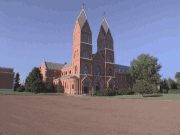
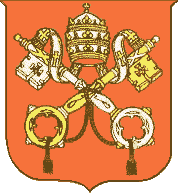
 ROLL Reunion
ROLL Reunion
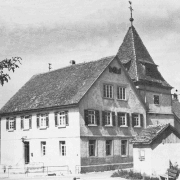
ST. ??? EVANGELICAL CHURCH (-) - Dimbach, Baden-Württemberg, Germany
The church was converted into a school.
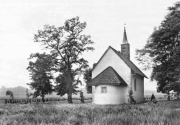
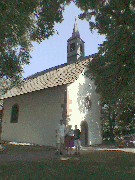
SCHWEINHEIMER CATHOLIC CHURCH (1151) - Jockgrim, Pfalz, Germany
Jockgrim's first church located about 2 miles south of Jockgrim.
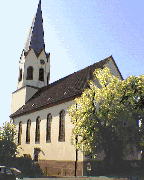
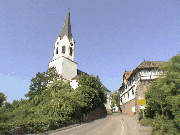
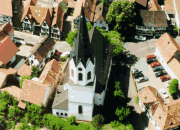
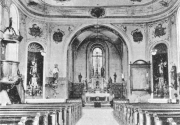 a.
a.
ST. DIONYSIUS CATHOLIC CHURCH (1772) - Jockgrim, Pfalz, Germany
a) Inside view of the church in 1944.
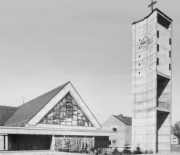
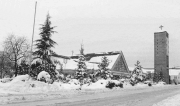
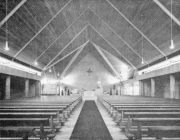
ST. GEORGE CATHOLIC CHURCH (1968) - Jockgrim, Pfalz, Germany
Jockgrim's newest church located in the center of town.

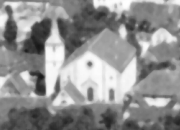
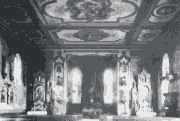
ST. ALBAN CATHOLIC CHURCH () - Kirchhausen, Baden-Württemberg, Germany
 a.
a.  b.
b. 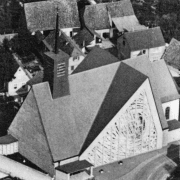 c.
c.  d.
d.
ST. GERTRUDIS CATHOLIC CHURCH (960-Present) - Leimersheim, Pfalz, Germany
The first church which was built in 960. The second church (a), completed in 1731, was torn down and the modern style church (c) was build in 1964 with the alter and chor from the old one. The patron saint is Gertrud from Nivelles (626-659). She was a nun and parton of gardeners and voyagers. b) Inside the 1763 church. d) Inside the 1964 church.


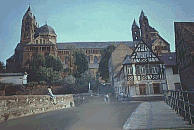
EMPEROR CATHEDRAL AT SPEYER (1030) - Speyer, Pfalz, Germany ![]()
The Diocese of Speyer (Spira) in Bavaria (now Rhineland-Pflaz) has two patron saints: St. Maria and St. Stephan. The city of Speyer dates back to the stronghold of Noviomagus, in the territory of the German tribe of the Nemetes, on the left bank of the Rhine. In the course of time a Roman municipality (Colonia Nemetum) developed out of this stronghold; in 451 the municipality was entirely destroyed by Attila. From its ashes arose a new city, Spira of Speyer. Christianity found entrance into the city in the time of the Romans. The first bishop, Jesse (Jessius), is mentioned in the Acts of the synods of Sardica (343) and of Cologne (346), but his historicity is not quite certain. On the other hand there is positive proof of Bishop Hilderich who attended the Synod of Paris held in 614. Since his episcopate the succession of bishops has been unbroken. In 748 Speyer was made suffragan of Mainz; and in 1030 the first stone of the present Romanesque Cathedral of Our Lady was laid; it was intended to be the mausoleum of the Salian emperors. The church was consecrated in 1061.
In the struggle over investitures, Bishops Huzmann (1073-90) and Johann I (1090-1104) upheld the Emperor Henry IV and died under the ban of the Church. In 1146 St. Bernard preached the Crusade at Speyer and won King Conrad III to the cause. Beside the four Salian emperors, Philip of Swabia, Rudolph of Habsburg, and the rival kings, Adolph of Nassau and Albert of Austria, are also buried in the cathedral. A lay brotherhood, the Twelve Brothers of Prayer, prayed without intermission in the cathedral, for the repose of the souls of these kings. Among the later bishops Matthias of Ramung (1464-78) should be especially mentioned for his reforming the clergy and people, and bringing new life into the diocese.
Between 1082 and 1111 there was a widening. After a conflagration in
1159 the dome was build up again. At the time of the Reformation several Diets were held at Speyer, the most important being in 1526 and 1529. In 1526 the condition of political affairs enabled the Protestants to secure the relatively favourable decision that each constituent state should act in reference to the matters contained in the Edict of Worms (1521) as it could answer to God and the emperor. But the action taken in 1529 was more decided: the Edict of Worms was to be executed, and the ecclesiastical innovations were to be abolished. Against this the Evangelical constituents protested. By the Reformation the diocese lost two thirds of its churches and benefices. Bishop Eberhard von Dienheim (1581-1610) sought to introduce the reforms ordered by the Council of Trent in the remaining territory. The gains temporally acquired during the Thirty Year's War were nearly all lost by the Treaty of Westphalia (1648). The diocese suffered greatly during the predatory wars of Louis XIV of France, and in 1689 the city and cathedral were burned. In 1794 the cathedral, which had been restored at great expense, was once more ravaged by the lawless soldiery of the French Revolution. In 1801 that part of the diocese on the left bank of the Rhine had to be ceded to Mainz; in 1815 the diocese was assigned to Bavaria; in 1817 it received new boundaries in the Bavarian Concordat and was made suffragan of the new metropolitan Bamberg. By the liberality of King Louis I of Bavaria, the cathedral was suitably decorated (1846-53), the frescoes being done by Schraudolph. The church was fully restorated in the 1900 century.The area of the diocese corresponds to that of the Bavarian Palatinate of the Rhine. Dr. Michael Faulhaber, formerly a professor at the University of Strasburg, was appointed bishop in 1910. The diocese has 120 deaneries, 235 parishes, 6 curacies, 86 chaplaincies and vicarships, 377 secular clergy, and 10 regular clergy. The Catholic population is 413,481; the Protestant population is about 500,000. The diocese has also 1 Dominican monastery (Oggersheim), 1 Capuchin monastery (St. Ingbert), and 100 houses for nuns
Source: The Catholic Encyclopedia, Volume XIV & Mr. Franz Pfadt
 Insignia of the Teutonic Order
Insignia of the Teutonic Order
The Knights of the German Order (Teutonic Knights) were one of the most influencial organizations which shaped Germany and central Europe from the 12th century onward.
 St. Mary of the Teutonic Knights
St. Mary of the Teutonic Knights
The complex was built in Jerusalem in the 1100's by the Order of the Teutonic Knights. The church was dedicated to Mary, mother of Jesus, and the other buildings included a guesthouse and a hospital. To the right is a road leading to the German hospital, and the road itself is called the "Street of the Germans." The building was excavated and renovated in the 1970s.
Catholics first appeared in Siberia in small numbers during the reign of Ivan the Terrible in the 16th century. During a surprise attack, some German Catholic knights and their servants were taken prisoners and exiled by the czar to Siberia. The number of Catholics later increased. Most of them, of course, were Poles and Germans. Dispite the years of communist repression, the Catholic Church has survived in Russia. [ MAP ]
 Prior to communist rule, Orthodox was the official Russian religion. This is a 1850's print of a Russian Orthodox Church in Moscow.
Prior to communist rule, Orthodox was the official Russian religion. This is a 1850's print of a Russian Orthodox Church in Moscow.
A comment by Joseph Schnurr in his book, "die Kirchen und das religioese Leben der
Russlanddeutschen, Katholischer Teil" (1980):
"The German Catholics of the Black Sea region stemmed from various parts of Germany, and they brought their song books with them to Russia and preserved them from generation to generation. Especially beloved was the songbook of the diocese of Speier, that was venerated like a relic, examples of the first edition from the year 1768 could still be found in the first quarter
of our century." (p. 65). [i.e., they preserved copies into the 1920s].
A quotation from Joseph Schnurr: "We German-Russians have all the freedoms of our religion we enjoyed in German villages and towns."
Schnurr qualifies that judgement a bit. He notes on p. 72 that Catherine II's manifest of 1763 prohibited the German colonists from establishing monasteries. Also, the right to missionize was restricted to the Orthodox church. Consequently, the church authorities of the Tiraspol diocese lacked an adequate number of helpers for the various charity organizations. A way around this was found by Fr. Jakob Scherr, who established the well-known orphanage in Karlsruhe in 1888. He introduced the lay-order of St. Francis (the so-called "Third Order," or "Terzianierinnen"), under the directorship of Sister Gertrud Keller (the sibling of Fr. Konrad Keller). Schnurr describes this lay order as consisting of men and women who were married and who were residing with their families and pursuing their trades, but they also wanted to become more deeply involved in charity activities and in other lay piety activities. I don't know how the seminaries got around the proscription, maybe they fell into a different legal category.
Schnurr also notes (p. 74) that the Russian authorities often raised bureaucratic barriers and restrictions against the repair and expansion of churches. Churches, chapels and prayer-houses could be constructed only where an already extant "Gotteshaus" existed. New religious structures required a special dispensation from the Ministry of the Interior (according to the Ukase of Dec. 31, 1830). The difficulties raised by the regime against the construction of new religious facilities were rather high, according to Schnurr. In the second half of the 19th century under Alex II, Alex III, and Nicholas II, dispensations for such construction were made only in special
cases. "The construction and the repair of a church depended totally on the judgment of the Administration, which had ties with the Orthodox 'Eparchial'
authorities" - Roland Wagner -




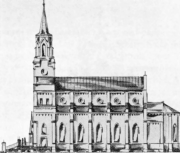 a.
a. 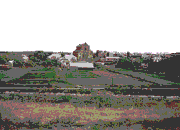
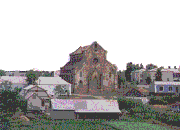
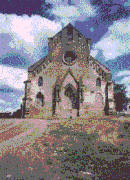 b.
b. 
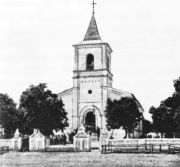

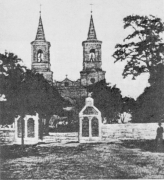

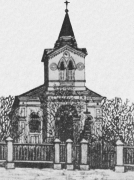
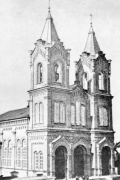
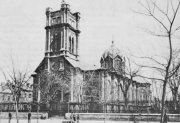
US Directory of the Catholic Church ParishesOnline.com


 a.
a.  b.
b.
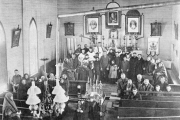 a.
a. 
 a.
a.  b.
b.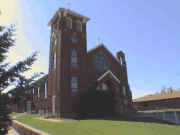

 a.
a. 
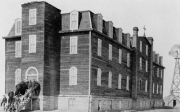 a.
a. 
